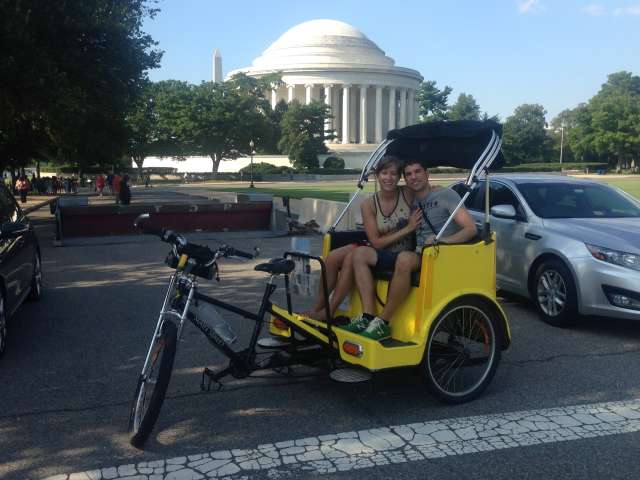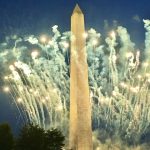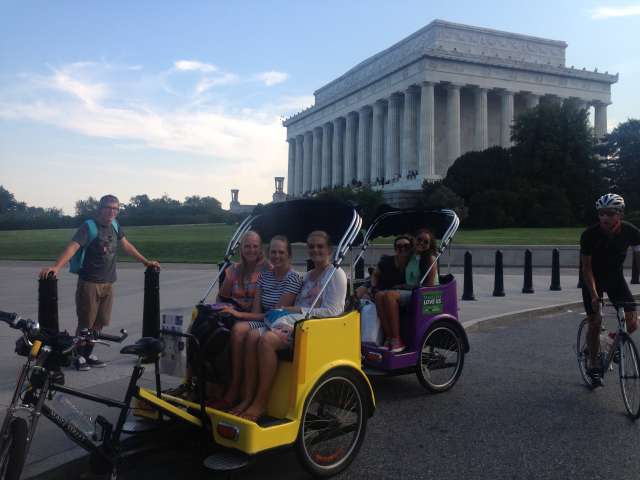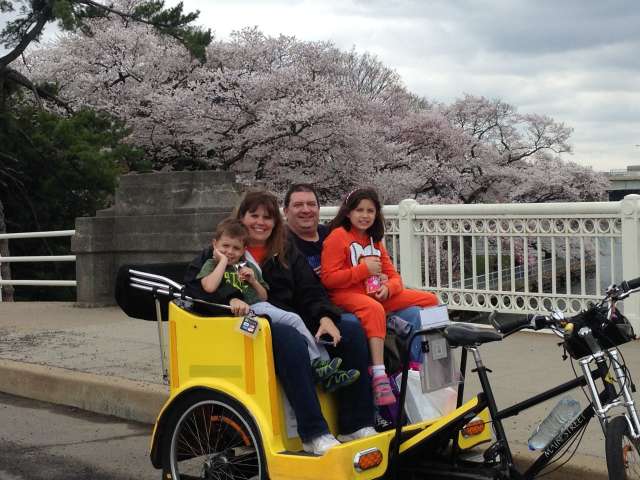Washington DC Attractions — Jefferson Memorial
Jefferson Memorial — One of the Top Washington DC Attractions
The Jefferson Memorial is one of the most popular of the Washington DC attractions. From the steps of the Jefferson Memorial, you get a spectacular view of the Tidal Basin and the Washington Monument. Of all the Washington DC attractions, this is one you should not miss. One way to visit the Jefferson Memorial is to include it in a DC tour by Nonpartisan Pedicab. The Jefferson Memorial is particularly impressive at twilight.
Opening Hours and Tickets at the Jefferson Memorial
The Jefferson Memorial is open 365 days a year, 24 hours a day, 7 days a week. There are never fees of any kind to visit the Jefferson Memorial. In fact, all the memorials and monuments on the National Mall are always free of charge to the visiting public.
Handicapped Services at the Jefferson Memorial
Like all the major DC monuments, the Jefferson Memorial is accessible to people with disabilities. There is an elevator that leads up to the inner chamber, where the statue of Jefferson stands. Handicapped parking is available on Ohio Drive, just outside of the Jefferson Memorial. On the first floor of the Jefferson Memorial, you will find a National Park Service information kiosk. Ask at the kiosk for the free use of a wheelchair to tour the Jefferson Memorial and the area surrounding the Tidal Basin. This service is available during working hours and is always free of charge.
Getting to the Jefferson Memorial
The nearest Metro station is Smithsonian Metro (on the Orange/Blue/Silver lines). Be aware that the metro station is approximately a mile away from Jefferson Memorial. There is also a Capitol Bikeshare stand. A great way to get here is to include the Lincoln Memorial in a pedicab tour of Washington DC attractions. Nonpartisan Pedicab gives a great tour of the DC monuments and the National Mall.
Parking at the Jefferson Memorial
Parking on the National Mall is always problematic. However, there 3 open air public lots on Ohio Drive near the Potomac River not overly far from the Jefferson Memorial. Except during the Cherry Blossom Festival, there is almost always available space at one of these parking areas.
On-street parking on the National Mall is no longer free of charge. Three hour parking is available at $2 per hour. Parking meters only accept credit cards.
Jefferson Memorial and the Tidal Basin during the Cherry Blossom Festival
The entire area around the Tidal Basin is lined with cherry trees. During late March or early April, they all come into bloom at once. The entire Tidal Basin area is a sea of pink and white. Full bloom only lasts a few days before the petals start to fall. The Cherry Blossom Festival attracts hundreds of thousands of visitors. The Jefferson Memorial is one of the most popular of the Washington DC attractions during this time of year.
Jefferson Memorial — History and Facts
The Thomas Jefferson Memorial, modeled after the Pantheon of Rome, is America’s foremost memorial to our third president. As an original adaptation of Neoclassical architecture, it is a key landmark in the monumental core of Washington, DC The circular, colonnaded structure in the classic style was introduced to this country by Thomas Jefferson. Architect John Russell Pope used Jefferson’s own architectural tastes in the design of the Memorial. His intention was to synthesize Jefferson’s contribution as a statesman, architect, President, drafter of the Declaration of Independence, adviser of the Constitution and founder of the University of Virginia. Architects Daniel P. Higgins and Otto R. Eggers took over construction upon the untimely death of Pope in August 1937. The Thomas Jefferson Memorial Commission was created to direct the erection of a memorial to Thomas Jefferson by an Act of Congress approved in June 1934. The present-day location at the Tidal Basin was selected in 1937. The site caused considerable public criticism because it resulted in the removal of Japanese flowering cherry trees from the Tidal Basin. Further controversy surrounded the selection of the design of the Memorial. The Commission of Fine Arts objected to the pantheon design because it would compete with the Lincoln Memorial. The Thomas Jefferson Commission took the design controversy to President Franklin D. Roosevelt who preferred the pantheon design and gave his permission to proceed. On November 15, 1939, a ceremony was held in which President Roosevelt laid the cornerstone of the Memorial.
In 1941, Rudolph Evans was commissioned to sculpt the statue of Thomas Jefferson. The statue of Jefferson looks out from the interior of the Memorial toward the White House. It was intended to represent the Age of Enlightenment and Jefferson as a philosopher and statesman. The bronze statue is 19 feet tall and weighs five tons. Adolph A. Weinman’s sculpture of the five members of the Declaration of Independence drafting committee submitting their report to Congress is featured on the triangular pediment. Also noteworthy, and adorning the interior of the Memorial, are five quotations taken from Jefferson’s writings that illustrate the principles to which he dedicated his life.
Few major changes have been made to the Memorial since its dedication in 1943. The most important change to note is the replacement of the plaster model statue of Thomas Jefferson by the bronze statue after the World War II restrictions on the use of metals were lifted. Each year the Jefferson Memorial plays host to various ceremonies, including annual Memorial exercises, Easter Sunrise Services and the ever-popular Cherry Blossom Festival. The Jefferson Memorial is administered and maintained by the National Park Service.
More information can be found at the National Park Service website.







